"Titanic" in the realities of the 21st century
Often when watching feature films about catastrophes at sea, thoughts come to mind about how real and possible everything that happens on the screen in life: could this or that situation really happen, if this or that means of salvation worked or didn’t work, is it right the heroes of the film, etc. In this article I would like to try to figure out what is the situation with safety at sea today, and how people should act in modern realities in order to be saved, using the example of situations from a well-known feature film based on real events - “Titanic”. Immediately make a reservation, I will not consider all aspects, due to their huge number. I will consider only the most vivid, global and interesting (of course, in my humble opinion).
It is known that the film "Titanic" is based on real events of the early twentieth century, when it was not strictly required that the number of ship's collective rescue equipment correspond to the number of people on board the vessel. The death of the Titanic was the impetus for the creation of the first edition of one of the fundamental international conventions - SOLAS. What has changed since its adoption? Someone might think that going on a cruise around the world, in the most sad case, everyone, without exception, will have enough space in lifeboats, but this is not entirely true. There were enough boats on the Titanic to accommodate about 1/3 of the passengers.
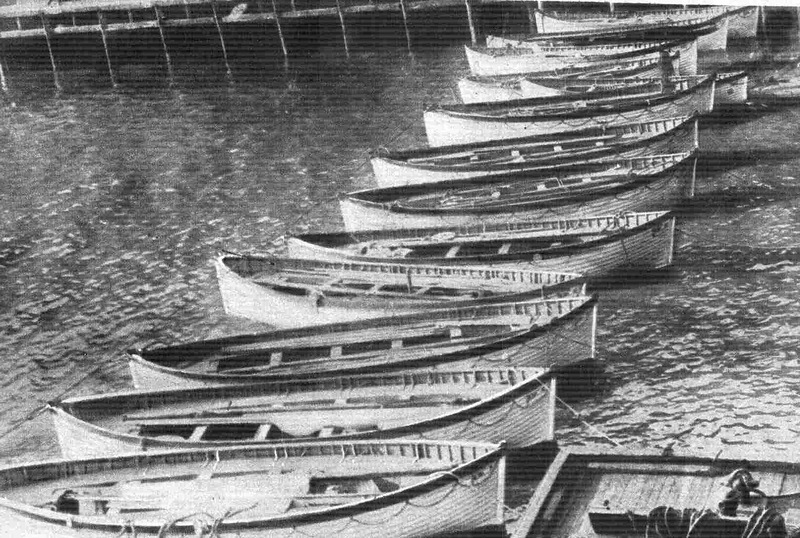
Lifeboats of m / v "TITANIC"
Nowadays, the minimum requirements for the capacity of boats on passenger ships have really changed in a safe direction: lifeboats with a total capacity sufficient to accommodate 50% of the people on board should be located on each side of the passenger vessel, that is, theoretically, there should be enough space in the boats for all .

Modern lifeboat
Additionally, in addition to lifeboats, life rafts should be installed on the passenger ship, the capacity of which is enough to accommodate 25% of passengers and crew.
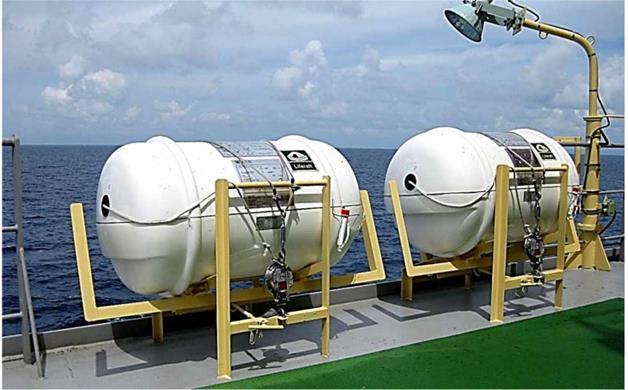

It is worth noting that the requirements for cargo ships are much stricter: there, in the general case, there should be enough boats on each side to accommodate all the people on board the vessel. This is quite logical: to ensure the availability of boats for 20 people of the crew of the cargo ship from each side is much easier than for the 5000 passengers of the cruise ship.
What is better for rescue in an emergency, boats or rafts? Hard to tell. In my daily work, as a duty, I often communicate with sailors, and often hear that it seems much easier and more efficient to escape on rafts than on boats. Imagine: a ship sinking (in control), a storm at sea, crazy rolling. You need to sit in a boat suspended on 2 hooks and a pair of cables 10 meters above the water (not enough? Take a larger ship, although it will hurt to fall from 4 meters), after which, praying that nothing will jam and that the remote the davit brake control worked and you went down successfully, experiencing hard hits on the side of the ship, so that the hook at the end of the descent yields without problems and does not turn out to be “sour”; or with a strong roll under the impact of waves, go down the storm ramp in full gear (wetsuit + life jacket) into an already lowered boat; or jump into the water near the boat, at the risk of breaking her head about her darling; or sit in a free-falling boat and simply “fall” with it from a height of 15 meters (dubious pleasure, isn't it?).
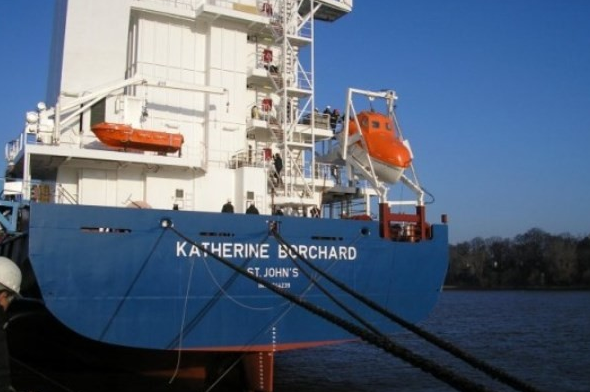
Free-falling lifeboat
With rafts, everything looks simpler: you just throw the container into the water, it opens, inflates, and you just have to climb into it by any means (the same storm trap or just jump, it's not so scary to fall on a soft one). For some reason, most sailors prefer rafts in this case, although there are exceptions: it is unlikely that an inflatable raft will help you if burning oil products float around you, but there are special boats for this case, and they are widely used on oil tankers.
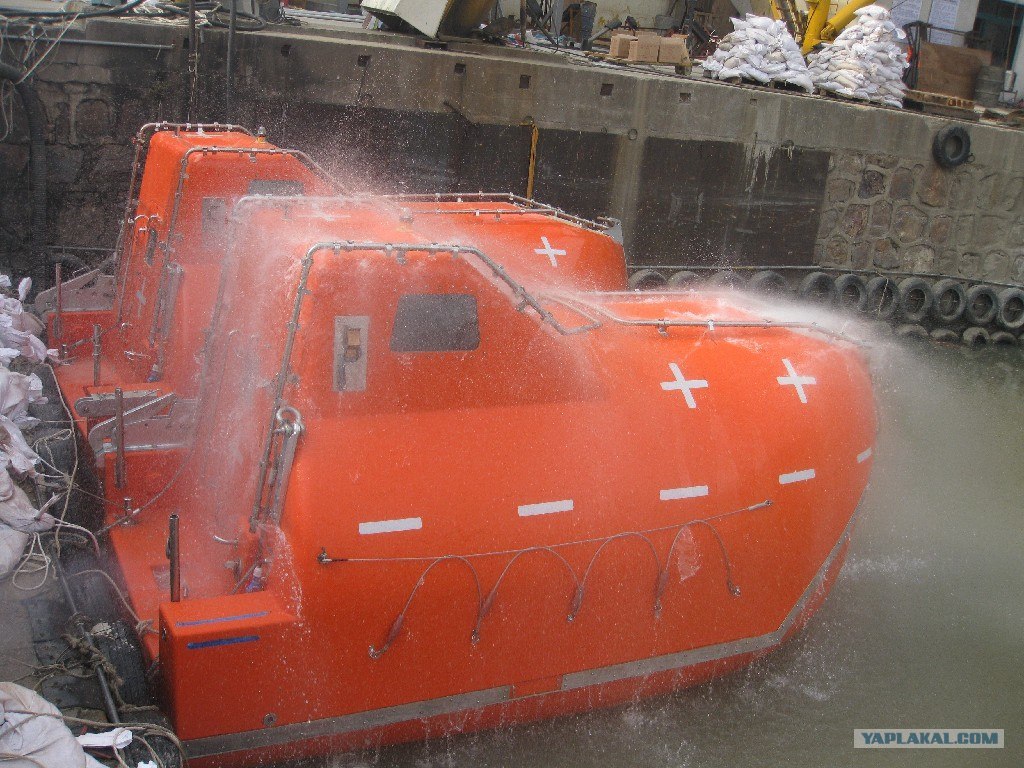
"Tanker" boat with a water irrigation system
In any case, today, unlike the realities of the "Titanic", you can almost certainly find yourself a place in a boat or raft in any cruise ship (and any ship).
The history of the Titanic shows us that ships have the ability to break in half. We will not discuss whether this is real or not - this is a fact. But what has been done today to reduce the risk of such a “breakdown”?

A scene from the Titanic film
industry. There is a concept in the marine engineering industry - general longitudinal strength. This, if very simplified, is a certain criterion that ensures the strength of the hull with longitudinal general bending.

The meaning of longitudinal bending moment
In a nutshell: due to the uneven distribution of masses along the length of the vessel, gravity and holding the vessel in calm water, coupled with wave loads, they can cause the hull to bend or bend (and also to twist, but that's another story). Naturally, the Titanic broke because his aft tip almost completely came out of the water, and the bending moment became such that the hull simply could not stand it.
Surely, if you put almost any modern vessel with a length of more than 100 m in similar conditions, it will crack no worse than the Titanic. But such a situation can happen in the modern world without any clashes with icebergs.
In the practice of shipbuilding in the USSR there was a rule of good taste, reinforced by the requirements of the Maritime Register of the USSR: avoid intersecting butt joints of hull structures located in one plane.
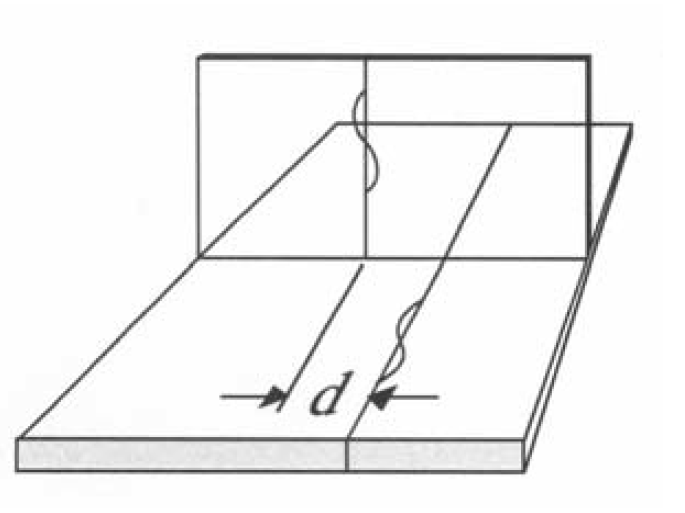
According to the Rules of the Russian Register, the distance d must be at least 200 mm. Applies to welded joints
This is due to the fact that although engineers take the strength characteristics of welded joints (now - the main joints in shipbuilding, your cap) in strength calculations as the base metal, in practice this is not entirely true: violations of welding technology can lead to the formation of concentration stresses, increased fragility of the material, lack of fusion ("voids") inside the seam, etc. However, modern world shipbuilding, in particular, Asian shipbuilding, has left the “Soviet” traditions. This can lead to sad consequences.
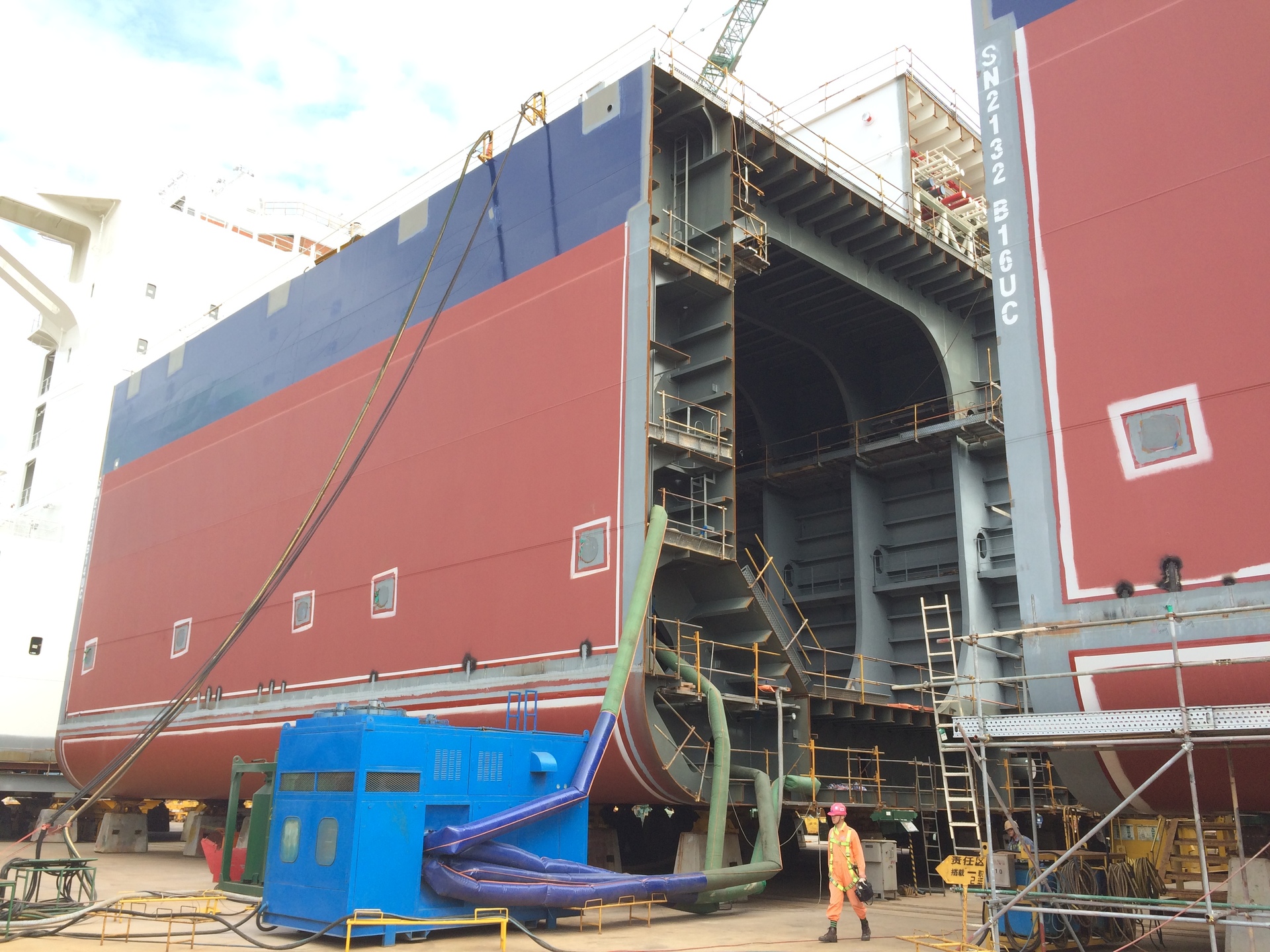
The design has all joints in one plane. MOL COMFORT MOL COMFORT was built using the same technology
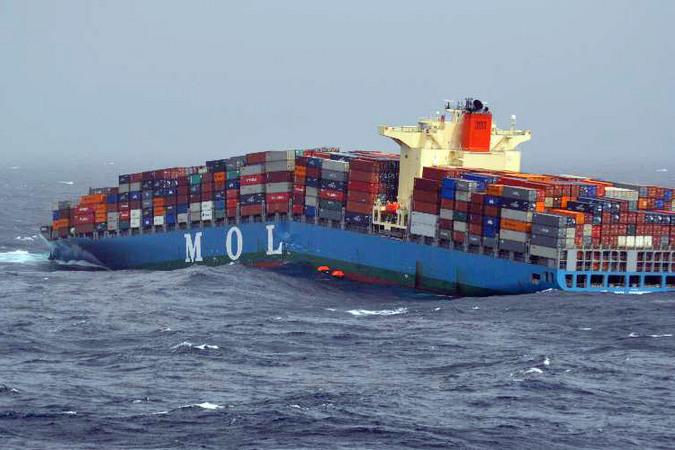
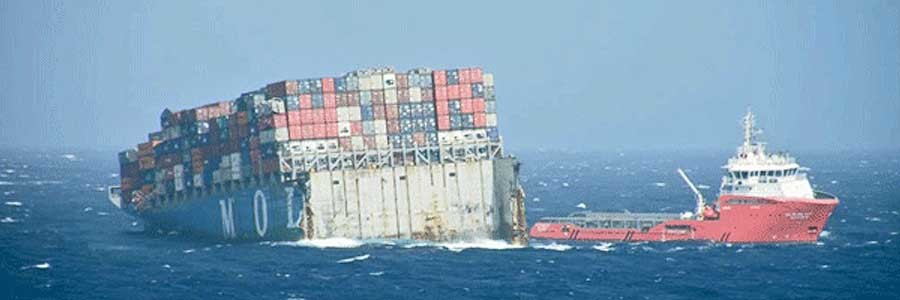
after an accident
On my own behalf, I can say that in Russia these traditions, while being followed by engineering staff, are not welcomed by “effective managers”, because the technologically “Asian” option is many times simpler and, as a result, cheaper.
I happened to work at the Samsung Heavy Industries shipyard (one of the world leaders in the shipbuilding industry), and there, each project is done according to such a scheme. Even ships of the same design as the broken MOL COMFORT are being built in exactly the same way as he.
Of course, in the event of any catastrophe, one can talk for a long time about violations of the operating rules, improper loading, etc., but even from the point of view of the fundamentals of philosophy, which is so often in vain neglected by young engineers, the "Soviet" version has advantages in terms of strength characteristics.
In marine practice, there is such a thing as “straightening a ship” (in various variations). Roughly speaking, when a vessel receives a hole and part of the compartments begins to fill up with water, in order to avoid the vessel getting excessive roll or trim, the captain may decide to intentionally fill this or that compartment with water, which of course will speed up the process of immersion, but will avoid very large angles. Remember how people fell, slipped, and what happened on the Titanic when the stern rose too much from the water?
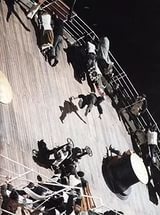
Frame from the Titanic film.
Moreover, if the captain fails to take straightening measures in time, the vessel can simply roll over, and then hardly anyone will be saved. There is an expression among marine engineers: "the ship should sink without turning over."
As you all remember, in our film, the character of the now-arthropod Leonardo froze and drowned. Could the situation today be different if he could not get into the raft or boat? The answer is unlikely. Today, passenger ships should have hydrothermal suits in an amount of at least 3 for each boat, and heat protection means (a warm bag to keep warm after you get out of the water) that are provided for each person painted in the boat should be stored there. By the way, rafts also store heat-shielding means, sufficient to accommodate 10% of people on the raft. That is, everything is tied to boats and rafts. Leo had no chance either then or now, and his only option is a raft or a boat.
But Leo would have equaled himself as a sailor on a cargo ship - he would definitely have had a practically personal hydrothermal suit designed for him, in which you can hang out in ice water for a little longer (up to 1 hour) and survive yourself. Again, cargo ships are much safer in this regard.

The sea is an extremely unfriendly element to man, and navigation, respectively, is a very dangerous occupation. So it was at the dawn of shipping. That was a hundred years ago. It remains so now. A person who is far from shipping might think that with modern technologies and the development of communications and other progress, nothing threatens people at sea, but this is far from the case. Much depends on the case, and engineering here is not able to predict all possible scenarios. Yes, and this is not necessary - there are optimal solutions, economically feasible, which designers of ships, rescue equipment and supplies adhere to, finding a compromise of "money / security". This situation takes place in the transport sector as a whole: no one designs airplanes that are able to “safely” fall from 20,000 m, no one builds ships, that will withstand the collision with the pier at full speed, no one will give each of the 5,000 passengers a personal wetsuit, etc. This implies the term “good marine practice”, which is quite acceptable and often used in marine engineering, a mixture of traditions that did not lead to sad consequences, with conclusions drawn after tragedies and problems, a kind of generalized experience. After all, shipbuilding is one of the most traditional sectors of heavy industry.
What, in the bottom line, did people do after the death of the Titanic? Learned from mistakes. There is no guarantee that in a week, as a result of the tragedy with another cruise ship, it will not be revealed that we did not foresee any errors. And there is no guarantee that we learned quite well from the mistakes of the Titanic.
Thanks for attention.
Part One: Boat
It is known that the film "Titanic" is based on real events of the early twentieth century, when it was not strictly required that the number of ship's collective rescue equipment correspond to the number of people on board the vessel. The death of the Titanic was the impetus for the creation of the first edition of one of the fundamental international conventions - SOLAS. What has changed since its adoption? Someone might think that going on a cruise around the world, in the most sad case, everyone, without exception, will have enough space in lifeboats, but this is not entirely true. There were enough boats on the Titanic to accommodate about 1/3 of the passengers.

Lifeboats of m / v "TITANIC"
Nowadays, the minimum requirements for the capacity of boats on passenger ships have really changed in a safe direction: lifeboats with a total capacity sufficient to accommodate 50% of the people on board should be located on each side of the passenger vessel, that is, theoretically, there should be enough space in the boats for all .

Modern lifeboat
Additionally, in addition to lifeboats, life rafts should be installed on the passenger ship, the capacity of which is enough to accommodate 25% of passengers and crew.


It is worth noting that the requirements for cargo ships are much stricter: there, in the general case, there should be enough boats on each side to accommodate all the people on board the vessel. This is quite logical: to ensure the availability of boats for 20 people of the crew of the cargo ship from each side is much easier than for the 5000 passengers of the cruise ship.
What is better for rescue in an emergency, boats or rafts? Hard to tell. In my daily work, as a duty, I often communicate with sailors, and often hear that it seems much easier and more efficient to escape on rafts than on boats. Imagine: a ship sinking (in control), a storm at sea, crazy rolling. You need to sit in a boat suspended on 2 hooks and a pair of cables 10 meters above the water (not enough? Take a larger ship, although it will hurt to fall from 4 meters), after which, praying that nothing will jam and that the remote the davit brake control worked and you went down successfully, experiencing hard hits on the side of the ship, so that the hook at the end of the descent yields without problems and does not turn out to be “sour”; or with a strong roll under the impact of waves, go down the storm ramp in full gear (wetsuit + life jacket) into an already lowered boat; or jump into the water near the boat, at the risk of breaking her head about her darling; or sit in a free-falling boat and simply “fall” with it from a height of 15 meters (dubious pleasure, isn't it?).

Free-falling lifeboat
With rafts, everything looks simpler: you just throw the container into the water, it opens, inflates, and you just have to climb into it by any means (the same storm trap or just jump, it's not so scary to fall on a soft one). For some reason, most sailors prefer rafts in this case, although there are exceptions: it is unlikely that an inflatable raft will help you if burning oil products float around you, but there are special boats for this case, and they are widely used on oil tankers.

"Tanker" boat with a water irrigation system
In any case, today, unlike the realities of the "Titanic", you can almost certainly find yourself a place in a boat or raft in any cruise ship (and any ship).
Part Two: Strength
The history of the Titanic shows us that ships have the ability to break in half. We will not discuss whether this is real or not - this is a fact. But what has been done today to reduce the risk of such a “breakdown”?

A scene from the Titanic film
industry. There is a concept in the marine engineering industry - general longitudinal strength. This, if very simplified, is a certain criterion that ensures the strength of the hull with longitudinal general bending.

The meaning of longitudinal bending moment
In a nutshell: due to the uneven distribution of masses along the length of the vessel, gravity and holding the vessel in calm water, coupled with wave loads, they can cause the hull to bend or bend (and also to twist, but that's another story). Naturally, the Titanic broke because his aft tip almost completely came out of the water, and the bending moment became such that the hull simply could not stand it.
Surely, if you put almost any modern vessel with a length of more than 100 m in similar conditions, it will crack no worse than the Titanic. But such a situation can happen in the modern world without any clashes with icebergs.
In the practice of shipbuilding in the USSR there was a rule of good taste, reinforced by the requirements of the Maritime Register of the USSR: avoid intersecting butt joints of hull structures located in one plane.

According to the Rules of the Russian Register, the distance d must be at least 200 mm. Applies to welded joints
This is due to the fact that although engineers take the strength characteristics of welded joints (now - the main joints in shipbuilding, your cap) in strength calculations as the base metal, in practice this is not entirely true: violations of welding technology can lead to the formation of concentration stresses, increased fragility of the material, lack of fusion ("voids") inside the seam, etc. However, modern world shipbuilding, in particular, Asian shipbuilding, has left the “Soviet” traditions. This can lead to sad consequences.
The design has all joints in one plane. MOL COMFORT MOL COMFORT was built using the same technology


after an accident
On my own behalf, I can say that in Russia these traditions, while being followed by engineering staff, are not welcomed by “effective managers”, because the technologically “Asian” option is many times simpler and, as a result, cheaper.
I happened to work at the Samsung Heavy Industries shipyard (one of the world leaders in the shipbuilding industry), and there, each project is done according to such a scheme. Even ships of the same design as the broken MOL COMFORT are being built in exactly the same way as he.
Of course, in the event of any catastrophe, one can talk for a long time about violations of the operating rules, improper loading, etc., but even from the point of view of the fundamentals of philosophy, which is so often in vain neglected by young engineers, the "Soviet" version has advantages in terms of strength characteristics.
Part three: so that you will not be crushed by the piano
In marine practice, there is such a thing as “straightening a ship” (in various variations). Roughly speaking, when a vessel receives a hole and part of the compartments begins to fill up with water, in order to avoid the vessel getting excessive roll or trim, the captain may decide to intentionally fill this or that compartment with water, which of course will speed up the process of immersion, but will avoid very large angles. Remember how people fell, slipped, and what happened on the Titanic when the stern rose too much from the water?

Frame from the Titanic film.
Moreover, if the captain fails to take straightening measures in time, the vessel can simply roll over, and then hardly anyone will be saved. There is an expression among marine engineers: "the ship should sink without turning over."
Part Four: Dramatic
As you all remember, in our film, the character of the now-arthropod Leonardo froze and drowned. Could the situation today be different if he could not get into the raft or boat? The answer is unlikely. Today, passenger ships should have hydrothermal suits in an amount of at least 3 for each boat, and heat protection means (a warm bag to keep warm after you get out of the water) that are provided for each person painted in the boat should be stored there. By the way, rafts also store heat-shielding means, sufficient to accommodate 10% of people on the raft. That is, everything is tied to boats and rafts. Leo had no chance either then or now, and his only option is a raft or a boat.
But Leo would have equaled himself as a sailor on a cargo ship - he would definitely have had a practically personal hydrothermal suit designed for him, in which you can hang out in ice water for a little longer (up to 1 hour) and survive yourself. Again, cargo ships are much safer in this regard.

What is the result?
The sea is an extremely unfriendly element to man, and navigation, respectively, is a very dangerous occupation. So it was at the dawn of shipping. That was a hundred years ago. It remains so now. A person who is far from shipping might think that with modern technologies and the development of communications and other progress, nothing threatens people at sea, but this is far from the case. Much depends on the case, and engineering here is not able to predict all possible scenarios. Yes, and this is not necessary - there are optimal solutions, economically feasible, which designers of ships, rescue equipment and supplies adhere to, finding a compromise of "money / security". This situation takes place in the transport sector as a whole: no one designs airplanes that are able to “safely” fall from 20,000 m, no one builds ships, that will withstand the collision with the pier at full speed, no one will give each of the 5,000 passengers a personal wetsuit, etc. This implies the term “good marine practice”, which is quite acceptable and often used in marine engineering, a mixture of traditions that did not lead to sad consequences, with conclusions drawn after tragedies and problems, a kind of generalized experience. After all, shipbuilding is one of the most traditional sectors of heavy industry.
What, in the bottom line, did people do after the death of the Titanic? Learned from mistakes. There is no guarantee that in a week, as a result of the tragedy with another cruise ship, it will not be revealed that we did not foresee any errors. And there is no guarantee that we learned quite well from the mistakes of the Titanic.
Thanks for attention.
